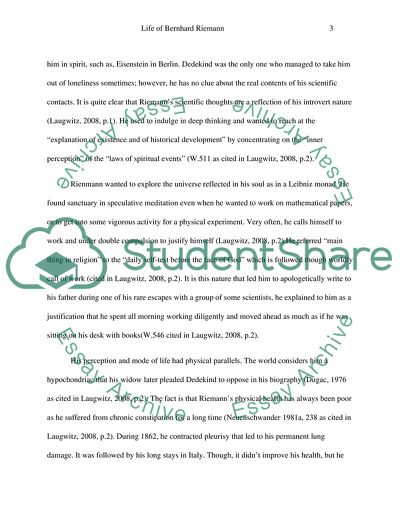Life of Bernhard Riemann Coursework Example | Topics and Well Written Essays - 2000 words. https://studentshare.org/mathematics/1864822-bernhard-riemann
Life of Bernhard Riemann Coursework Example | Topics and Well Written Essays - 2000 Words. https://studentshare.org/mathematics/1864822-bernhard-riemann.


